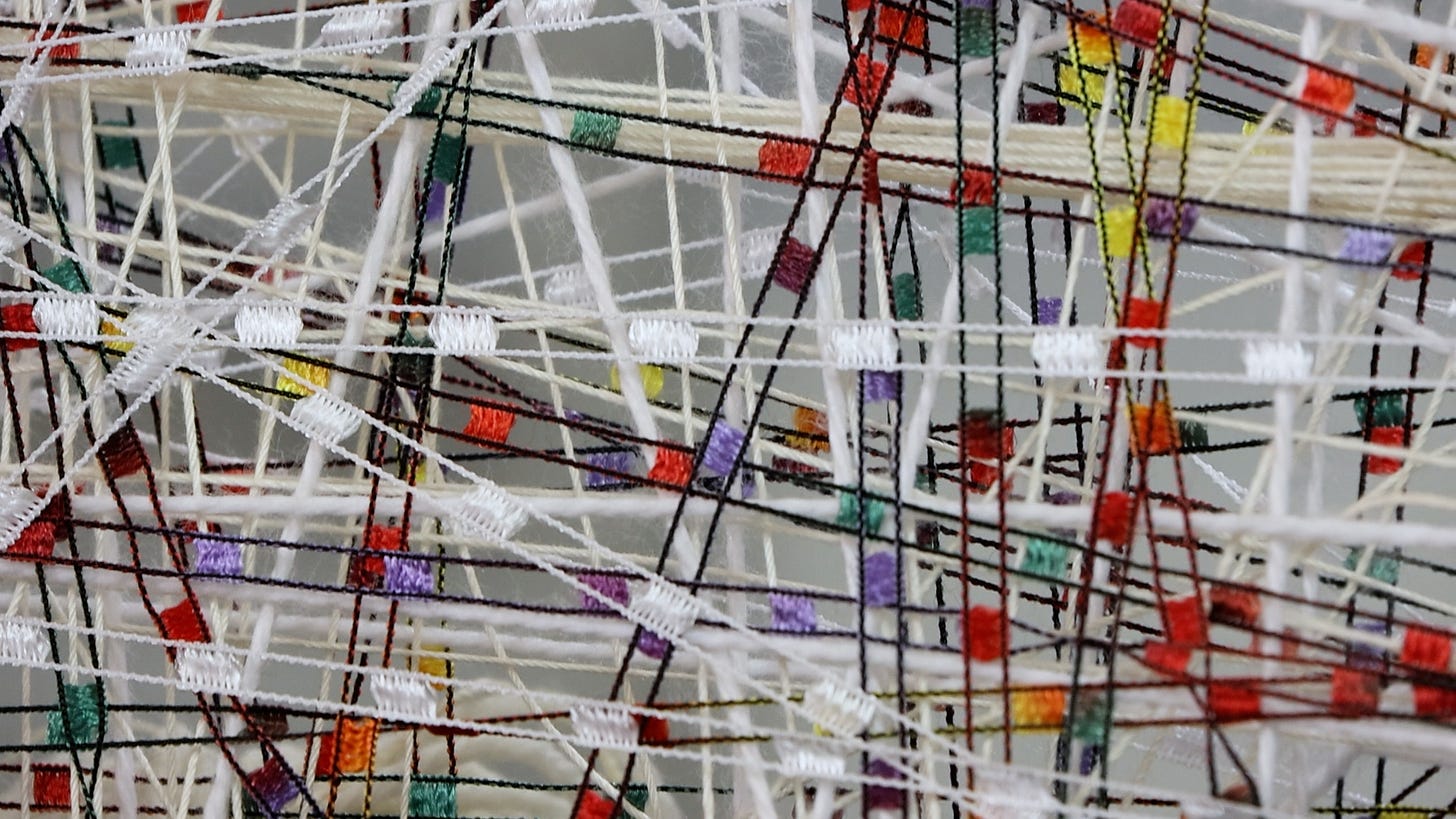
Introduction
Next month, Bright Archives will celebrate its first year, and it’s hard to believe we've been on this journey for almost twelve months. It felt fitting to launch a new business in autumn—a time of transformation and change—and we’re looking forward to sharing what we have planned for year two in next month’s newsletter.
One of the projects we know we’ll be working on in the coming year is a new book. This month, we signed a contract with publisher Rowman & Littlefield (part of Bloomsbury Publishing) to write a book about production practices in oral history. The book will cover topics such as videography techniques, editing practices, and transcription, all with an eye toward the emergence and use of technologies in oral history, including AI. It is the first large-scale book project we have taken on, so we're feeling slightly intimidated but excited overall.
AI is at the top of many folks’ minds and all signs point to this technology becoming increasingly a part of our daily lives. We have started getting questions from our clients—some fueled by anticipation and others driven by anxieties—about adopting AI technologies like Descript’s AI video editor and Otter.ai’s summarization tool. There is a ton of room for examination and exploration in this space, and we encourage exercising your critical thinking and information literacy muscles so you’re informed and equipped to make decisions about how and when to adopt these technologies. Back in July, the Oral History Association hosted a symposium on AI in Oral History. It is a terrific introduction to the current conversation about using these tools in humanities and cultural heritage spaces, even for folks who don’t do oral history. We aim to contribute to the ongoing discussions in our forthcoming book on oral history production practices.
Archives don’t appear in the news very often, but recently 60 Minutes on CBS covered a story about the United States National Archives and Records Administration (NARA) and the importance of preserving the nation’s records. It’s great to see archives receiving national attention, even if it was prompted by negative circumstances. Keep reading for more details.
And if you haven’t had a chance to watch the first video in our new FAQs series, check it out. It answers the question What is an Archive? and features Senior Archivist Sarah Hallett from the Mattress Factory museum.
We hope you’re enjoying this time of change and transformation as summer turns into autumn. See you next month!
Visit brightarchives.com for more updates and info about what we do and how we do it.
Thanks for reading,
Katherine and Dave
On Air + A Sudden Gust of Wind:
Lenka Clayton and Phillip Andrew Lewis
We had the pleasure of visiting artists Lenka Clayton and Phillip Andrew Lewis in their studio to interview them for a short film about their commissioned public art project A Sudden Gust of Wind and the concurrent exhibition, On Air, at 820 Liberty, both in Downtown Pittsburgh.
Commissioned by the Pittsburgh Cultural Trust, the project is a large-scale, outdoor public artwork consisting of 200 sculptures installed within the branches of over 80 trees in Pittsburgh’s Cultural District.
Our short film will release to the pubic in the coming weeks. In the meantime, check out the social media preview below and the next time you visit downtown Pittsburgh, look up!
Invisible Wounds: Dafna Rehavia and David Hanauer
Back in November 2023, we met artist Dafna Rehavia and poet/artist David Hanauer to discuss their upcoming exhibition Invisible Wounds. It sounded exciting, and based on our previous forays, we signed on to create documentation of their work. We filmed a number of studio sessions and workshops, and we advised on the gallery installation. After the exhibition opens, we will also produce a walkthrough video.
Invisible Wounds positions “the self as a wounded object, which retains the memories and scars of past personal, familial and cultural trauma. In [their] artistic practice, the bodily sensations and semi-consciousness memories are embodied through the art and poetic processes.”
Invisible Wounds, curated by Oreen Cohen, runs from October 18 to November 22, 2024 at Artists Image Resource in Pittsburgh, PA, with an opening reception on October 18, from 5-9pm.
60 Minutes: How the National Archives protects billions of historical documents
60 minutes featured the National Archives and Records Administration (NARA) in an episode aired on September 22, 2024. The piece addressed NARA’s vital role in ensuring presidential records are appropriately stored, emphasizing the importance of accountability and transparency in government. It doesn’t cover the legal and ethical flashpoints that have received significant media attention, but it does give a sense of the enormous challenges NARA is facing, including in its mission to digitize its massive holdings.
The Washington Post also published an opinion piece about NARA and its efforts regarding digitization and born-digital records: “A digital tsunami is coming. The National Archives is in trouble.”
Most archives, not just NARA, face significant challenges in digitization and the management of born-digital materials. The sheer volume of data generated—in NARA’s case this is billions of records—combined with the varying standards and technologies used for storage complicates efforts to ensure long-term access and usability. Add in other challenges, such as limited funding, digital rights management, data integrity, and security, and archives are facing what seems like an impossible task. Balancing the need for preservation with the rapid pace of technological change requires innovative strategies and resources, making the future of NARA—and all archival repositories with large-scale collections of records and artifacts—exciting and daunting.
Questions? Contact us or visit www.brightarchives.com
Find us on Instagram | YouTube | LinkedIn






